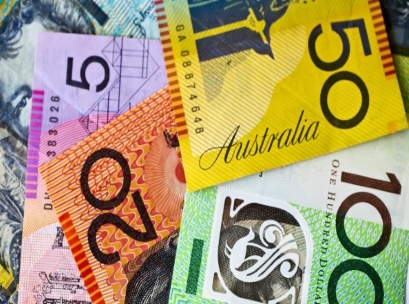
The Australian dollar has fallen Tuesday, buying 69.09 US cents from 69.26 US cents on Monday.
Yesterday, the local currency firmed in the wake of a surprise election victory by the Coalition, although the gains were pared in the face of Sino-US trade tensions and bets for a local rate cut.
The Aussie dollar was last at 69.06 US cents on Monday, having bounced from a four-month trough of 68.65 US cents.
The blip higher came after Prime Minister Scott Morrison’s centre-right Liberal National Coalition pulled off a shock win in the federal election, beating the left wing Labor Party.
“The return of a Coalition government injects greater certainty into the outlook,” said Su-Lin Ong, head of Australian fixed income strategy at RBC Capital Markets.
“We would expect some bounce in business confidence.”
“It removes some downside risk to activity medium term and tempers our peak to trough forecast for national house prices of -15 per cent,” she added.
Labor had proposed ending some tax breaks for housing investment that could have added pressure on already sliding property prices.
The Aussie now faces a home-grown hurdle in the form of a speech by Reserve Bank of Australia Governor Philip Lowe on Tuesday where the prospect of a rate cut is likely to be high on the agenda.
Earlier this month the central bank said an easing might be needed if the labour market did not stay strong. Since then, data has showed the unemployment rate rising to 5.2 per cent in April even as hiring beat forecasts.
“We now expect that after last week’s soft readings on the labour market the RBA will cut rates in June,” said David de Garis, director of economics, markets at NAB.
“The numbers pointed to a risk that labour market spare capacity will not reduce, putting the RBA’s getting back to target inflation forecast at risk,” he added.
“NAB expects another follow-up cut in August.”
The futures market implies a 62 per cent chance of a quarter point cut in the 1.5 per cent cash rate when the RBA board next meets on June 4.
A move is almost fully priced for July and a further cut to one per cent is baked in by December.
Yields on three-year bonds are well under the cash rate at 1.19 per cent, having hit all-time lows last week.
Australian government bond futures were near record peaks, with the three-year bond contract steady at 98.825.
The 10-year contract added half a tick to 98.3550.
Supporting the Aussie was a statement from China’s central bank on Sunday that it would maintain the stability of its yuan within a reasonable and balanced range.
There has been speculation China would let the yuan devalue in order to keep its exports competitive and offset some of the drag from US tariffs.
Investors often use the Aussie as a liquid proxy for the yuan and sold it on Friday when the Chinese currency came under pressure amid stalled trade talks.





